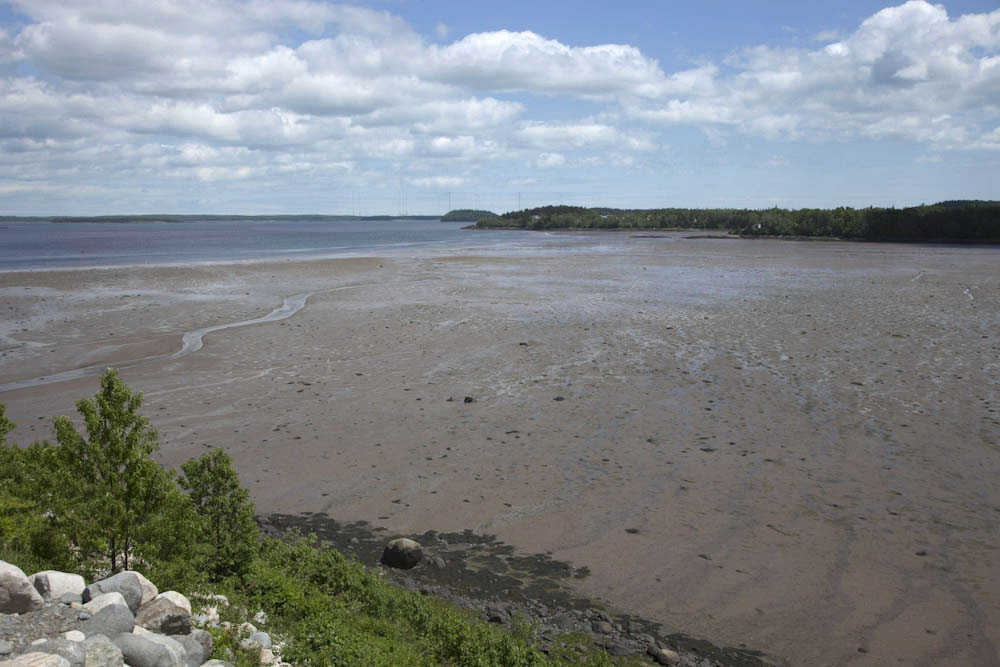

#TIDAL FLATS DRIVER#
2010).Īnother direct driver leading to a shift from a salt marsh to either a tidal flat or subtidal flat is changes in sediment delivery. However, a threshold exists in the rate of sea level rise (RSLR), where upon the mechanisms that effectively control the platform elevations are no longer able to keep up (Kirwan et al.
#TIDAL FLATS SERIES#
It has long been recognized that salt marshes have the capacity to regulate their platform elevation in response to rises in the sea level through a series of non-linear biophysical feedback mechanisms (Murray et al. atmosphere, glaciers, ice caps, ice sheets & terrestrial reservoirs). Broadly speaking, mean global sea level changes through the dual processes of thermal expansion and shifts in the hydrologic budget (amount of water in the oceans vs. The direct impact of climate change on an increasing rate of sea level rise and the resulting impact on marine coastal systems has been well established (UNEP 2006).
#TIDAL FLATS DRIVERS#
One of the main drivers resulting in a shift from a salt marsh to tidal flat/subtidal flat is an increasing rate of sea level rise.

Shift from Salt Marsh to Tidal Flat/ Subtidal Flat On the other hand, subtidal flats are permanently submerged. Existing below mean sea level (MSL), the surface is only exposed during the lowest tides (Fagherazzi et al. Instead, it is characterized by microbial food chains, dominated by benthic macroorganisms and benthic microalgae (Alongi 1998). While generally found between mean sea level and mean high tide, the range of Spartina and the optimum level for the marsh platform varies regionally based on tidal range, nutrient loading, vegetation, sediment loading, and climate (McKee & Patrick 1988 Morris et al. The high density, largely monoculture systems exist in the intertidal zone, experiencing daily inundation. This regime is largely dominated by the growth and presence of Spartina alterniflora (Smooth Cordgrass) along the east coast of North America and Spartina anglica (Common Cordgrass) in continental northern Europe, halophytes adapted to saline and water logged environments (Marani et al.

The alternate regimes (tidal flat or subtidal flat) vary regionally based on a number of different factors including tidal basin topography, climate, hydrology, vegetation, and sediment loading. These options range from the reintroduction of top predators and removal of invasive/ exotic species to coordinated dam releases to provide necessary sediment pulses.Ĭoastal ecosystems of the intertidal zone located in temperate/ mid-latitudes can shift between a salt marsh and either a tidal flat or subtidal flat. Effective management options largely depend on the regional variables of the system. However, thresholds exists in the rate of sea level rise (RSLR) and the rate of sediment delivery, where upon the mechanisms that effectively control the platform elevations are no longer able to keep up with sea level rise. It has long been recognized that salt marshes have the capacity to regulate their platform elevation in response to rises in the sea level through a series of non-linear biophysical feedback mechanisms.

Transitions to consumer control either through the overharvesting of predators or the introduction of invasive/ exotic species can also contribute to this regime shift. This regime shift is primarily driven by the rate of sea level rise and the rate of sediment delivery. The shift from a salt marsh to either a tidal flat or subtidal flat generates a loss of significant ecosystem services such as pollution filtration, storm protection, and fisheries enhancement.


 0 kommentar(er)
0 kommentar(er)
